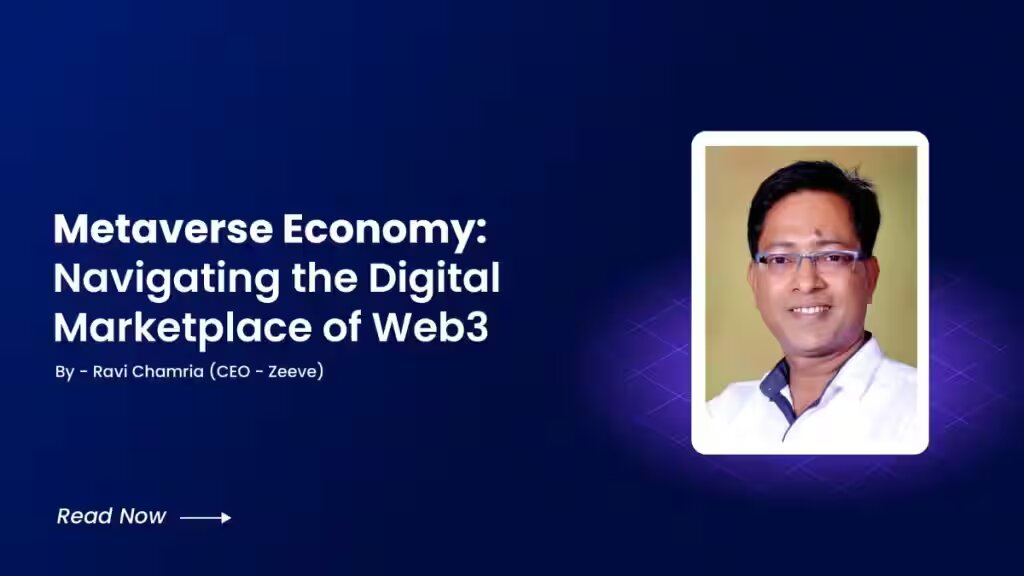The metaverse Industry spending value will increase from $61.8B in 2022 to around $426.9B by the end of 2027. To enhance the scope, reach, and experiences, businesses, and end-users will actively look for ways to be a part of this new paradigm. This quest of staying relevant will give birth to new platforms and marketplaces that will unlock & shape the future of commerce.
Exploring what’s possible: The diverse digital marketplaces in the Metaverse
Digital marketplaces in the metaverse are expanding the horizons of online commerce.The explosion of digital marketplaces within this virtual realm isn’t merely about selling goods online; it’s about reimagining commerce altogether.
Imagine the e-commerce experience becoming tangible, where you can practically feel the texture of a fabric or see the sparkling hues of a piece of art from the comfort of your couch. Brands like Flipkart, Amazon, and Nike are already setting the stage, orchestrating shopping experiences that are nothing short of revolutionary. But this continues beyond e-commerce. Its marketplaces extend to real estate, offering a virtual dimension where lands are bought, sold, and traded like Decentraland. Gaming items, digital art, and collectibles have found a vibrant marketplace in NFTs, fusing creativity and value in previously unimaginable ways.
But the metaverse isn’t just changing the type of marketplaces; it’s also redefining commerce itself. Where once physical-to-physical (P2P) exchanges were the norm, the metaverse has introduced Virtual-to-Physical (V2P), Physical-to-Virtual (P2V), and Virtual-to-virtual (V2V) models. Imagine purchasing a virtual item that translates into a physical experience or buying something at a music festival that unlocks a virtual component. It’s this blending of physical and virtual realms that’s creating a new frontier. Take NIKE’s sale of RTKFT NFTs. They are the classic example of a V2V model, also known as “direct-to-avatar” commerce, akin to the “direct-to-consumer” model but within a virtual context.
Focusing on what people can use today is the Metaverse’s way to the future
Why did ChatGPT create so much buzz when AI has existed for ages? Because it was something that people could use instantly, deriving real value from just a few prompts. The same applies to Metaverse. Winning in this expansive digital realm is often about meeting more down-to-earth needs, offering value-added products and services that consumers can utilize today, whether separately or in tandem with the physical world.
Brands eager to invest in the Metaverse should focus on things that already work, enhancing them with immersive technology. Even in the virtual world, engaging consumers with use cases that genuinely resonate with them is the key to driving product adoption and value creation. A recent McKinsey survey says Consumers show less enthusiasm for futuristic offerings, preferring Metaverse products or services that connect with their regular needs. While many brands are developing immersive, digital-only shopping experiences, the excitement lies more in augmenting physical-world shopping.
For instance, in the fashion industry, virtual try-ons that assist with fitting resonate more with consumers because they reduce costs and complexity linked to product returns over buying things solely for their Avatars. Virtual property tours and demonstrations draw more interest in real estate, while buying or renting virtual properties might receive less initial traction. While this dynamic may evolve with time and technology, for now, the focus should be on creating a separate reality but enhancing the existing one.
The commercial opportunity will follow consumer behavior
By understanding their customers’ evolving demands, the most successful brands in history have adapted and remained relevant. What might seem logically obvious today may soon change. So, a commercially viable approach for Metaverse sounds like this: watch closely, learn faster, and iterate continuously.



